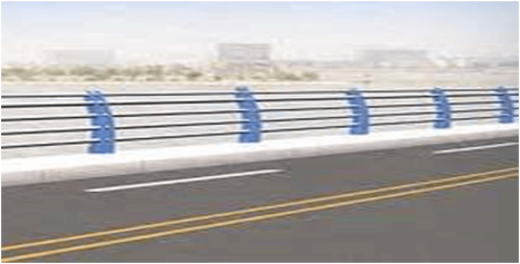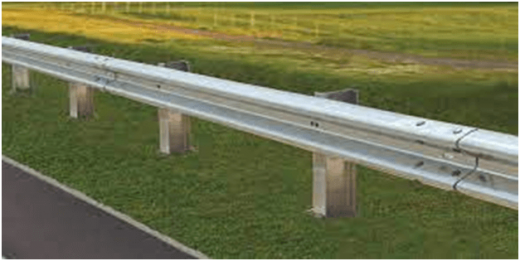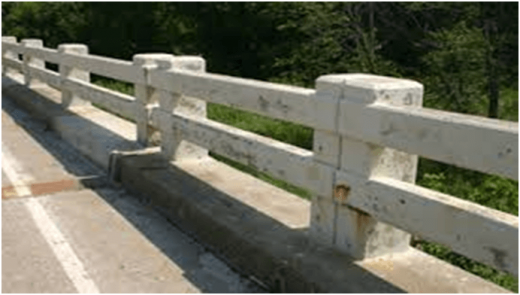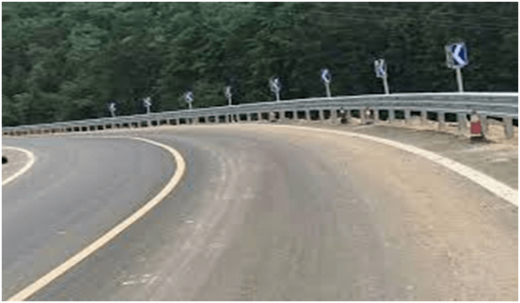The fundamental objective of a bridge railing system is to offer public safety along the length and edges of the bridge. This includes rerouting rogue automobiles back onto the road without posing a safety threat, as well as guaranteeing the safety of bicyclists and pedestrians. Although bridge railing systems do not provide structural support, they must be crashworthy. Bridge railing, as a result, differs from ordinary highway railing in that it is more rigid than flexible highway railing. Because it provides a progressive shift in the stiffness of the two railing systems, transition railing is utilized to connect the two railing systems. Railing design and needs have changed as vehicle size and power have changed.
The most recent standard for crash testing devices on the National Highway System is the AASHTO Manual for Assessing Safety Hardware (MASH). It entails diverting errant vehicles back onto the road without endangering the public’s health and guaranteeing the safety of bikers and pedestrians. Although the bridge’s railing systems do not offer structural support, they must be crashworthy. However, because it was intended for the standards at the construction time, much of the original bridge railing does not fulfill current code requirements. Because it is understood that repairing all of this railing would be prohibitively expensive, authorities frequently allow it to remain in place until needed.
Railings are available in a variety of shapes and sizes, and they are utilized all throughout the world. The railing is chosen based on service level requirements such as design speed, average daily traffic volumes, the number of trucks using the route, and site geometry. Other factors, such as functional and aesthetic considerations, influence the railing choice to be used. The four basic railing systems at bridges and approaches are bridge railings, transitions, approach guardrail, and approach guardrail ends. These four main components must meet agency requirements for appropriate heights, materials, strength, and geometric aspects.
Different Types of Bridge Railing:
1. Steel Bridge Railing:
Steel railings come in a wide range of cross-sections and designs. A tubular rail method is the most popular type of steel bridge rail. Concrete curb railings and barrier wall railings are built individually. Architectural steel railings are typically utilized for pedestrians and in low-traffic regions. The design of architecturally significant bridges is not large and hefty. Without risking pedestrian safety, they utilize attractive handrails.

Fig 1:Steel Bridge Railing
Courtesy: Owencorning.com
2. W-Beam Bridge Railings:

Fig 2:W- Beam Bridge Railing
Courtesy: Trinityhighway.com
For smaller bridges or roads with less traffic, W-Beam railing is a good option. This railing system, which runs from the top of the bridge to the pavement and is attached to steel posts or truss girders, is normally 27 inches long. The W-Beam is a simple steel railing that can be doubled for further strength. Like the W-Beam, the Thrie Beam is a steel guardrail that performs well in high-traffic areas. Additional finishes, such as paint coatings or galvanization, can be applied to many pedestrian and steel bridge railings. Because of their widespread use, the requirements for constructing steel railing systems differ from state to state.
3. Concrete Bridge Railing:

Fig 3: Concrete Bridge Railing
Courtesy: Dot.state.mn.us
The most frequent material used in bridge construction is concrete. Concrete rails are affixed to the bridge’s deck slab to create a sturdy vehicular barrier. For metropolitan areas or bridges carrying big truck loads, concrete railings are the best alternative. Concrete railings are expensive to build at first. Large concrete barriers can sometimes impede a clear view of the road. High-strength concrete railings can be integrated with a tubular railing system in such circumstances. The building budget, bridge deck material, and needed state all influence the proportions and construction of bridge railings.
4.Thrie Beam Bridge Railings:

Fig 4: Thrie Beam Bridge Railings
Courtesy: hqguardrail.com
Thrie beams are high-strength highway guardrail structures that are used on severe bends and slopes. Unlike W-Beams, the three-wave cross-sectional geometry of the beam rail provides superior tensile and anti-corrosion qualities. Three beam rail systems can cushion the impact of out-of-control cars, guiding them to a safer stop. The performance and versatility of these rail systems are unrivalled.
Conclusion:
The practice of maintaining the railing system from damage due by moisture, de-icing chemicals, traffic vibration, and the environment is known as precautionary maintenance. Materials can have faults from the beginning, such as thin patches of galvanizing on steel or fissures in concrete created by incorrect curing when poured, which can lead to premature failure. It’s important to keep in mind that every railing system starts to deteriorate the day it’s installed. The purpose of preventative maintenance is to use best-practice techniques and materials to slow down the failure process as much as feasible. This section outlines various strategies for performing such maintenance, but it is not meant to be comprehensive .Determine the level of maintenance and materials required, as well as what signage and traffic controls are required, before working on any bridge railing.
References:
1.Fontanez, D. R. (2020, November 16). Types Of Bridge Railing – Guide To Bridge Railing – U.S. Bridge. U.S. Bridge. https://usbridge.com/types-of-bridge-railing/.
2. The Engineering Community. (2022, January 4). The Engineering Community. https://www.theengineeringcommunity.org/the-common-types-of-bridge-railings/-.
3. 711 – Bridge Railings – Media Wiki. (n.d.). 711 – Bridge Railings – Media Wiki. https://mdotwiki.state.mi.us/construction/index.php/711_-_Bridge_Railings.
4. Guardrail Knowledge Base – Short Span Steel Bridges. (2020, December 8). Short Span Steel Bridges. https://www.shortspansteelbridges.org/guardrail-knowledge-base/.
5. Bridge Rail – Concrete And Steel. (n.d.). Bridge Rail – Concrete and Steel. https://www.txdot.gov/driver/txdot-visual-dictionary/bridge-rail-concrete-and-steel.html.
If you have a query, you can ask a question here.



tnx